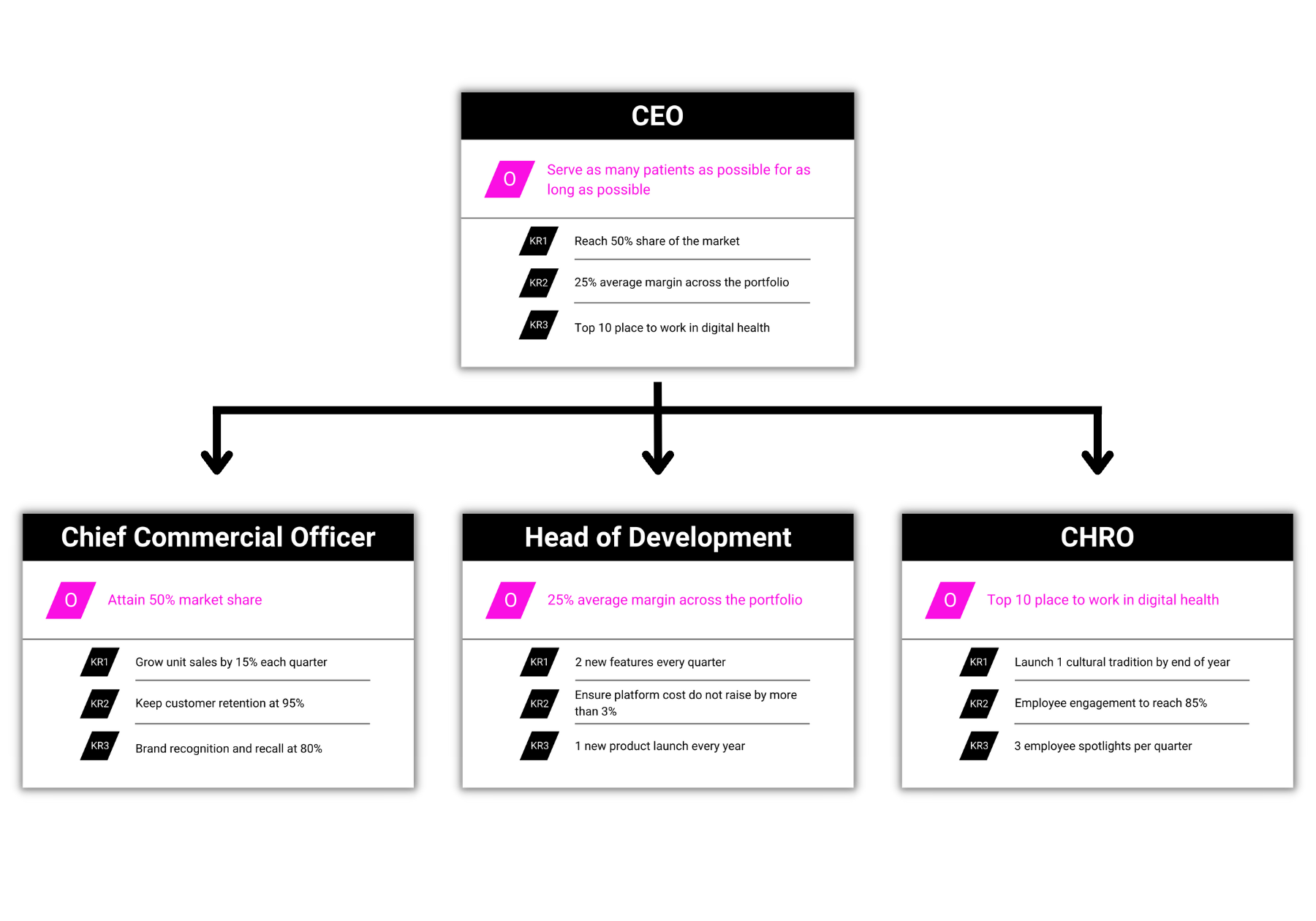A Framework for Getting What You (Your Company) Wants
Get posts directly delivered to your inbox HERE
Objectives and Key Results (OKRs) is a goal setting and management tool created by Andy Grove at Intel and taught to John Doerr. Doerr coined the term OKR and was the one who introduced the philosophy to Google’s founders in 1999.
Since then, many companies have adopted the OKR model to simplify and clarify what they were doing and how they are going to get there.
So what are the components of an OKR?
The model is simple -
Objective
An objective is what you need achieved over the course of a year or even longer term. They should be significant, concrete, and aspirational. It serves to align a company, department, or for individuals.
Key Results
What needs to happen? Key results are specific, timebound (usually a quarter), aggressive, and measurable/ verifiable. As work progressed, they can be revisited and restated.
Each set of OKRs should be held accountable by one person, and each key result can be assigned to another accountable individual if appropriate. As long as it brings clarity to who is doing what to reach the OKRs, the framework is doing its job.
WHY OKRs?
There are many benefits to use this framework, and John Doerr always talk about the five that matters:
F.A.C.T.S.
Focus: OKRs help a team to do a few things really well instead of a lot of things poorly
Alignment: OKRs, when used across the organization, points everyone in the same direction that is critical to execute on the business and brand strategy
Commitment: OKRs push teams and individuals to sign up for specific outcomes, sticking to the agreed upon priorities
Tracking: OKRs are meant to track progress and uncover when tactics need to be changed instead of failing at the “end”
Stretching: OKRs help teams do more and aim for something bigger. And because OKRs are not tied to compensation, sandbagging is not as prevalent, allowing the organization to make more significant progress and changes.
THE FRAMEWORK
If I were to write an OKR for this blog post, it would this:
This is a simple framework for crafting OKRs, but as you can see, we can make it clearer and more measurable:
How many benefits?
How many common mistakes?
How long should the post be?
As with any framework, it takes practice to fill it up and make it as useful as possible.
EXAMPLES
In this example, I show how a high-level objective of the CEO can get translated down to each of the department heads. The objective to “Serve as many patients as possible for as long as possible” becomes a rallying cry for the rest of the organization, and the Key Results of the CEOs in turn become the Objective for the management team members.
You can easily imagine how it can go as many levels as it needs to go to penetrate the entire organization. What is your specific objective if you are Brand Strategist working for the CMO who works for the CCO?
Another example is for a Chief Marketing Officer responsible for a rebrand effort.
You can have more than 3 Key Results and you probably guessed that bigger objectives will probably have more of them than very specific objectives.
COMMON MISTAKES
Writing OKRs can take time to develop and every set of OKRs should have some sort of a feedback and iterative process so everyone is absolutely committed.
Here are a few mistakes to avoid
Too many objectives (aim for no more than five)
OKRs written in jargon that no one understands (they should all be self-evident when it has or hasn’t been achieved)
Treating OKRs as KPIs (Key performance indicators, or KPIs are measures of “health”, and not an management framework for change)
Status quo OKRs (OKRs are meant for boosting the business above what’s commonly done)
I hope you start to use OKRs in your business and in your team. It should help bring clarity and a sense of commitment to something meaningful. And remember that if you/ your team fail to reach certain Key Results, it’s meant as input to refine the next set of OKRs - it should never be seen as a failure. If it is seen as a failure, then the organization will start to “sandbag” and aim lower and lower each time there is an OKR exercise.
Ways I can help you:
Subscribe to Healthy Brand Mondays: Leverage brand thinking to accelerate your growth
Download free guides and tools: Learn from my years of experience as a brand strategist
Work with me: Be a podcast guest or hire my services for your brand



